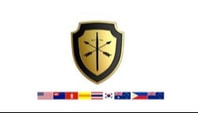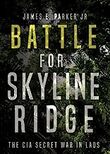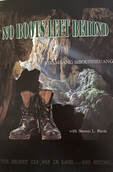- CAVWV
- Our Allies
- Special Projects
-
Events & Observances
- Independence Day
- Mental Health Awareness Month
- Memorial Day 2024
- Flag Day
- Vietnam Armed Forces Day
- Vietnam Summer Festival
- Gen. John Vessy Day 2023
- American Allies Day 2023
- SGU Veterans Commemoration Day
- POW / MIA / Genocide Rememberence Day
- Veterans Day
- Vietnamese New Year
- Genocide Remembrance Day
- CAVWV Veterans Day Commemoration
- Vietnam Veterans Day
- Vietnam "Black April" Day
- Featured Focus
- Contact Us
Campaign Z, Battle for Skyline Ridge |
On 21 December 1971, the 174th PAVN Regiment, backed by the 14th Antiaircraft Battalion, took Hill 1663. From its summit, they poured plunging fire on the nearby Royalist position at Ban Na until it was evacuated.[17]
Groupement Mobile 31 (GM 31) arrived from Military Region 3 to reinforce the Royalists on 22 December. By 28 December, MR 2 had received six Lao battalions and 11 replacement howitzers; 25 more of the latter were en route. On 30 December, Groupement Mobile 30 (GM 30) arrived as additional reinforcement. By now, half of the 4,000 guerrillas that had succumbed to the initial PAVN attacks were still unaccounted for. The situation was desperate enough that 111 B-52 sorties had struck in support of the Royalists during December. The PAVN shot down six T-28 Trojans and three Phantoms during the same period.[18][19][20]
On 30 December 1971, Communist forces attacked Sala Phou Khoun, a strategic intersection in the Royalist rear; the counter for this would become Operation Maharat.[21]The next day, the first Communist 130mm shells fell on Long Tieng. They blew up the main ammo dump, including its RLAF facilities. Vang Pao unexpectedly left his headquarters at the vital guerrilla base. His CIA advisers followed him to a smoky hut in Ban Song Sai, 21 kilometers to the southwest. There they found him ill, depressed, weeping, and cursing the lack of air support. He returned to Long Tieng with them. They took him to hospital on 4 January, to be admitted for treatment of viral pneumonia.[22][23]
By 5 January 1972, about 600 rounds of 130mm explosives had hit Long Tieng. Radio intercepts of PAVN messages revealed 24 PAVN battalions were poised to attack the Royalists. On the Royalist side, both GM 21 and GM 23 had been mauled into uselessness. Eight of the Royalist infantry battalions had been relieved for refitting. Given the gravity of the PAVN threat to the Long Tieng base, its aviation operations were dispersed away from Communist reach. The TACAN air navigation system on Skyline Ridge was moved 20 kilometers further south to another mountaintop. Flight operations—whether RLAF, Air America, or Continental Air Services, Inc—followed the refugee relief effort, which had been transferred from Sam Thong to nearby Ban Son. In Vang Pao's absence, discipline slipped; there was some looting by both Thais and Hmong.[24]
On both 7 and 9 January 1972, PAVN sappers penetrated Long Tieng's defenses in raids against the 20 Alternate airfield there. On 11 January, CIA case agents began construction of hardened bunkers for protection from shell fire. That same day, PAVN troops from the 335th Independent Regiment, the 148th Regiment, and 14th Antiaircraft Battalion overran a Royalist guerrilla battalion, pushed GM 23 out of the way, and attacked Long Tieng from the north, northeast, and east. They pushed a Thai mercenary battalion from the Charlie Alpha helicopter landing zone, the highest point on Skyline Ridge overlooking Long Tieng. Meanwhile, down south in Bangkok, the deputy chairman of the National Executive Council floated the idea that the Hmong could relocate to Thailand to escape the war.[25]
On 12 January, GM 30 was lifted back to the base of Skyline Ridge and ascended to the Charlie Echo landing pad on its western end. On 14 January, two Thai battalions were brought in to seize both ends of the Ridge. The subsequent eastward assault along the ridgeline on 17 January by GM 30 was supported by the Thais, artillery fire, and B-52 strikes. By 18 January, the Hmong irregulars had reclaimed all but the eastern end of the ridge at a cost of 35 killed and 69 wounded.[26]
Media reactionEditOn 14 January, the PAVN's daily newspaper, Quan Doi Nhan Dan, proclaimed victory at Long Tieng. On 16 January, they ran a detailed account of the "victory", complete with campaign map.[27]
The fighting had garnered the attention of foreign correspondents, who now deemed it "the most important battleground of the Indochina war". Previously denied access to the secretive base at Long Tieng, on 19 January the journalists were finally granted entry. Two helicopter loads of reporters from United Press International, The New York Times, Associated Press, and other media outlets were flown in after swearing not to reveal the identity of any CIA personnel on site. They were shuttled about the battlefield, with a doughty few electing to be convoyed in to the GM 30 positions. While there, a few mortar shells dropped in nearby.[28] When a medevac helicopter came in, the unhurt journalists barged aboard before a wounded Thai officer could be loaded. A later medevac had to be called in for the wounded major after the reporters departed.[21] The journalists changed their mind about an overnight stay at Long Tieng, and were flown back to Vientiane later that day.[28]
Retreat of PAVNEditOn 20 January 1972, two PAVN battalions attacked Skyline Ridge, inflicting 45 casualties on GM 30. After their retreat, their position was occupied by a Royalist guerrilla battalion advised by CIA case agent George Bacon, call sign Kayak. Also, by 24 January, GM 30 and two Royalist guerrilla battalions swept the remaining PAVN from Skyline Ridge. By then, four supporting Thai artillery positions had been set up in an arc about nine kilometers south of Long Tieng. That same day, two fresh battalions of Thais arrived as Royalist reinforcements. On 25 January, four more battalions of Thais arrived; on 27 January, two more. On 30 January 1972, GM 30 was relieved and flown home to Military Region 3. Vang Pao shuffled his troops into the best possible defensive positions. Once again, the PAVN had come up short on capturing Long Tieng.[29]
Groupement Mobile 31 (GM 31) arrived from Military Region 3 to reinforce the Royalists on 22 December. By 28 December, MR 2 had received six Lao battalions and 11 replacement howitzers; 25 more of the latter were en route. On 30 December, Groupement Mobile 30 (GM 30) arrived as additional reinforcement. By now, half of the 4,000 guerrillas that had succumbed to the initial PAVN attacks were still unaccounted for. The situation was desperate enough that 111 B-52 sorties had struck in support of the Royalists during December. The PAVN shot down six T-28 Trojans and three Phantoms during the same period.[18][19][20]
On 30 December 1971, Communist forces attacked Sala Phou Khoun, a strategic intersection in the Royalist rear; the counter for this would become Operation Maharat.[21]The next day, the first Communist 130mm shells fell on Long Tieng. They blew up the main ammo dump, including its RLAF facilities. Vang Pao unexpectedly left his headquarters at the vital guerrilla base. His CIA advisers followed him to a smoky hut in Ban Song Sai, 21 kilometers to the southwest. There they found him ill, depressed, weeping, and cursing the lack of air support. He returned to Long Tieng with them. They took him to hospital on 4 January, to be admitted for treatment of viral pneumonia.[22][23]
By 5 January 1972, about 600 rounds of 130mm explosives had hit Long Tieng. Radio intercepts of PAVN messages revealed 24 PAVN battalions were poised to attack the Royalists. On the Royalist side, both GM 21 and GM 23 had been mauled into uselessness. Eight of the Royalist infantry battalions had been relieved for refitting. Given the gravity of the PAVN threat to the Long Tieng base, its aviation operations were dispersed away from Communist reach. The TACAN air navigation system on Skyline Ridge was moved 20 kilometers further south to another mountaintop. Flight operations—whether RLAF, Air America, or Continental Air Services, Inc—followed the refugee relief effort, which had been transferred from Sam Thong to nearby Ban Son. In Vang Pao's absence, discipline slipped; there was some looting by both Thais and Hmong.[24]
On both 7 and 9 January 1972, PAVN sappers penetrated Long Tieng's defenses in raids against the 20 Alternate airfield there. On 11 January, CIA case agents began construction of hardened bunkers for protection from shell fire. That same day, PAVN troops from the 335th Independent Regiment, the 148th Regiment, and 14th Antiaircraft Battalion overran a Royalist guerrilla battalion, pushed GM 23 out of the way, and attacked Long Tieng from the north, northeast, and east. They pushed a Thai mercenary battalion from the Charlie Alpha helicopter landing zone, the highest point on Skyline Ridge overlooking Long Tieng. Meanwhile, down south in Bangkok, the deputy chairman of the National Executive Council floated the idea that the Hmong could relocate to Thailand to escape the war.[25]
On 12 January, GM 30 was lifted back to the base of Skyline Ridge and ascended to the Charlie Echo landing pad on its western end. On 14 January, two Thai battalions were brought in to seize both ends of the Ridge. The subsequent eastward assault along the ridgeline on 17 January by GM 30 was supported by the Thais, artillery fire, and B-52 strikes. By 18 January, the Hmong irregulars had reclaimed all but the eastern end of the ridge at a cost of 35 killed and 69 wounded.[26]
Media reactionEditOn 14 January, the PAVN's daily newspaper, Quan Doi Nhan Dan, proclaimed victory at Long Tieng. On 16 January, they ran a detailed account of the "victory", complete with campaign map.[27]
The fighting had garnered the attention of foreign correspondents, who now deemed it "the most important battleground of the Indochina war". Previously denied access to the secretive base at Long Tieng, on 19 January the journalists were finally granted entry. Two helicopter loads of reporters from United Press International, The New York Times, Associated Press, and other media outlets were flown in after swearing not to reveal the identity of any CIA personnel on site. They were shuttled about the battlefield, with a doughty few electing to be convoyed in to the GM 30 positions. While there, a few mortar shells dropped in nearby.[28] When a medevac helicopter came in, the unhurt journalists barged aboard before a wounded Thai officer could be loaded. A later medevac had to be called in for the wounded major after the reporters departed.[21] The journalists changed their mind about an overnight stay at Long Tieng, and were flown back to Vientiane later that day.[28]
Retreat of PAVNEditOn 20 January 1972, two PAVN battalions attacked Skyline Ridge, inflicting 45 casualties on GM 30. After their retreat, their position was occupied by a Royalist guerrilla battalion advised by CIA case agent George Bacon, call sign Kayak. Also, by 24 January, GM 30 and two Royalist guerrilla battalions swept the remaining PAVN from Skyline Ridge. By then, four supporting Thai artillery positions had been set up in an arc about nine kilometers south of Long Tieng. That same day, two fresh battalions of Thais arrived as Royalist reinforcements. On 25 January, four more battalions of Thais arrived; on 27 January, two more. On 30 January 1972, GM 30 was relieved and flown home to Military Region 3. Vang Pao shuffled his troops into the best possible defensive positions. Once again, the PAVN had come up short on capturing Long Tieng.[29]



